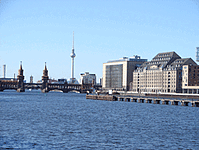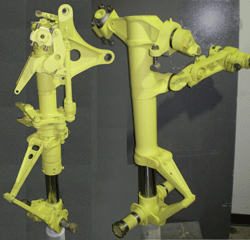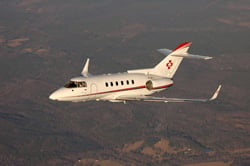In 2011, Duncan Aviation team members made hundreds of trips around the world providing AOG services. While providing the most-needed AOG services to our customers on nearly every Continent, team members also took in some local culture, food and sites.
Berlin, Germany

In March, Scott Shefke, Challenger/Global Tech Rep, traveled to Berlin,Germany, to perform and assess the viability of restoring a Challenger CL 604 to airworthiness status. The project included performing engine boroscopes, performance runs, system operations checks, fuel sampling and general condition of aircraft.
“Berlin is a magnificent city to visit,” says Scott. “It is rich with history.”
Cairo, Egypt

In Cairo, Egypt, Dan Soderstrom, Master Turbine Engine Mechanic, and Bill Walker, Engine Tech Rep, were in the right place at the right time when one project turned into two. While troubleshooting a faulty fuel control unit on a Hawker 800XP, a local Hawker 850XP operator approached them for assistance in fixing leaking starter/generator seals.
Both Dan and Bill said that everyone they had contact with in Egypt were very nice and helpful. Dan hopes to have more opportunity to see the great city if he gets the chance to go in the future.
Bordeaux, France

Ron Grose, Falcon Tech Rep, attended the annual Falcon 7X Steering Committee meeting in May, in Bordeaux, France, a beautiful old city located in southwestern France along the Garonne River, surrounded by elite vineyards. As a member of the steering committee, Ron and others oversee the development of the scheduled maintenance program for the Falcon 7X aircraft.
One of Ron’s favorite places to visit was the small village of Saint Emilion. It is a 1,700 year old village which was, at one time, surrounded by a large moat used for protection against the warring tribes. This quaint village had narrow cobblestone streets, great restaurants and many wine tasting shops.
Brisbane, Australia

Duncan Aviation Fuel System Lead Technician, Jon Abrahamsen, took a week long trip to Australia in May. He was dispatched to repair a wing junction plate fuel leak on a Falcon 2000EX.
Jon used one of his days to drive two hours down to Surfers Paradise, a large tourist beach. He also took the train downtown to the south shore for dinner and a couple of local beers. Jon says the area was beautiful.
Shanghai, China

Scott Howell, Airframe Lead Mechanic, along with three other fellow Duncan Aviation team members, traveled to Shanghai, China to complete a crucial fix on a Falcon 7X. Getting tools and equipment through customs posed a challenge, but the team stuck to the task, completing the project early.
On the first full day of their trip, the group made their way to The Bund, a mile long street lined with shopping. A local gentleman led them beyond the glamour of these stores to another area. Here, they had the adventure of walking up steep wooden stairs, entering into random people’s homes, where they bargained with local merchants for various items. It is an experience they will not soon forget. Scott describes the city’s transportation as very convenient and clean. The food was not what he would have suspected, but enjoyed trying the various delicacies of the region.
Santo Domingo, Dominican Republic
Ned Shanks, Engine Rapid Response Tech out of Fort Lauderdale, FL, made a trip to Santo Domingo, Chile, in October to assist a customer. The #1 engine on their Lear 35 would not start. Having seen this squawk many times before, Ned suspected there was an issue with the aircraft’s igniter box and prepared for his trip with this in mind. This was a very important job because the aircraft was an air ambulance and was scheduled to fly a sick infant back to the United States for medical care.
After arriving, clearing Customs and making it to the aircraft, Ned quickly discovered his suspicions were correct, a failed igniter box. As soon as he complied with the removal and replacement of the box, ground runs and required paperwork, they were airborne and on their way back to Ft. Lauderdale. Shortly after arrival back home, the aircraft was prepped and sent out on another rescue mission.







